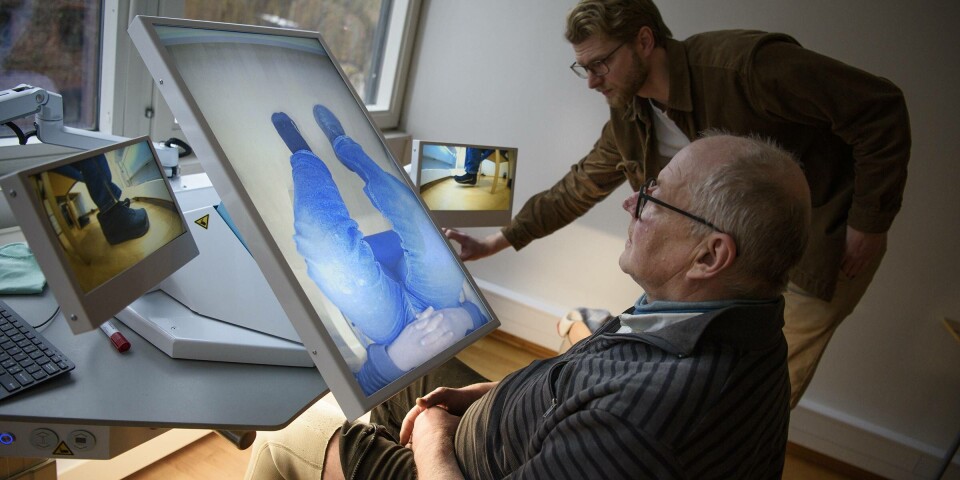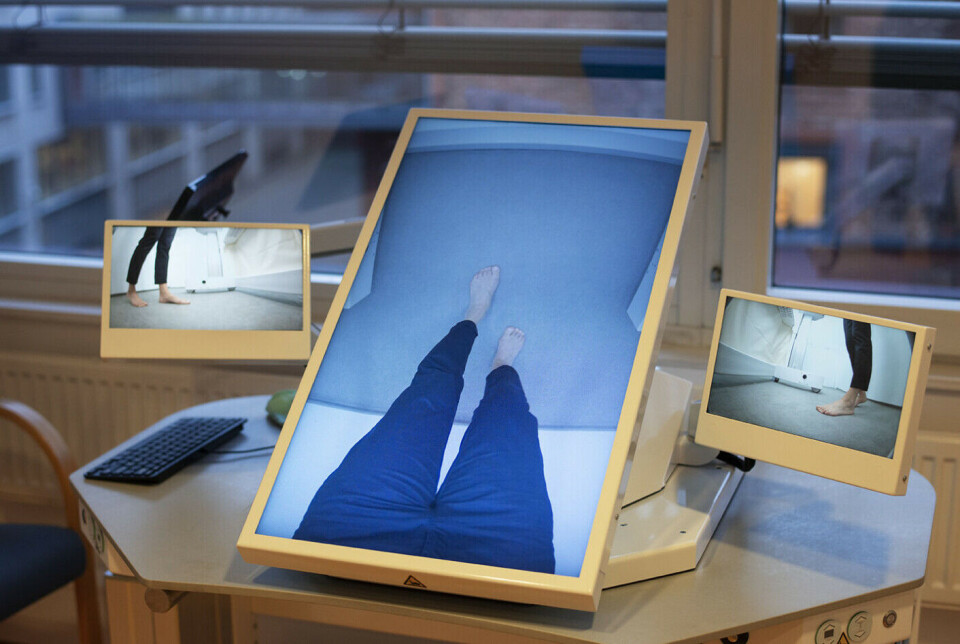THIS CONTENT IS BROUGHT TO YOU BY Oslo Metropolitan University - read more
New hope for treating phantom pain
Today, there are few treatment options for people with phantom pain. A new treatment is being studied at OsloMet, which has shown promising results so far.

“Some days, it has been so painful that it feels as though someone is drilling into my leg,” says Pål Røhnebæk.
He describes how phantom pain can feel on the worst days. That is, pain in the leg that is no longer there.
Most people who have had an arm or leg amputated develop what we refer to as phantom pain. It is pain in body parts that are gone or no longer have a functioning nerve supply, but which the brain still remembers.

This was also the case for Pål Røhnebæk, even though he felt better after the amputation. The pain was actually worse before.
More than a year ago, he had to have his left leg amputated from his knee down. He had been struggling with sciatica and nerve pain running down his leg for a long time, and also had a painful ankle.
It turned out that he had several fractures in the leg and had been living with these for too long. All of this made amputation necessary.
Treating phantom pain in a new study
Today, there are few treatment options for people with phantom pain. A new treatment is being studied at OsloMet, which has shown promising results so far.
“The latest research findings show that the appearance of a seemingly intact leg moving pain-free on the amputated side, even if only on a screen, can lead to a reduction in phantom pain,” says researcher Terje Gjøvaag.
He is responsible for the study, together with researcher Jens-Christian Trojel Hviid.
The condition can be very painful and uncomfortable, and many live with chronic phantom pain their entire lives. It can also be difficult to treat phantom pain, but the treatment the researchers are working on appears promising.
“The first results form our studies show that as little as one treatment can result in an acute reduction in phantom pain,” says Gjøvaag.
The study uses advanced health technology. The patient exercises in front of a screen where the brain is tricked into believing that there is an intact leg on the amputated side that can move without pain.
The body part still exists in the brain
The treatment involves the system first filming various exercises and movements performed with the healthy leg.
The system then creates a mirrored version of the body part to ‘replace’ the amputated leg. The video showing two intact legs is then displayed on a large monitor in front of the patient.
“The patient therefore gets the impression that there are two intact body parts that can both perform normal movements,” explains Jens-Christian Trojel Hviid.
The same method has also been used for stroke patients.
“You could say that if you have a body part that you haven’t moved for several years, the body part would get stiff and painful. The amputated body part still exists in people’s brains, but it isn’t used,” says Hviid, adding:
“As you carry out the exercises in this treatment, you actually feel as though the amputated leg is able to move without pain.”
See that the treatment helps
Over the last two months, Pål Røhnebæk has been one of the participants in the new study.
He has undergone 16 treatments, and this day in December is the last one so far.

During the exercises, there is full concentration.
“A lot of it's in the head. I know I don’t have that leg, but when I look at the screen, I can still see that the leg and the stump at the knee are doing the exercises. For example, I can flex my toes and pull my sock on," he says.
After treatment, he notices that the leg with the amputated part is less stiff. His movement and stability when he walks in steep terrain have changed.
“I find that the treatment helps alleviate the phantom pain,” says Røhnebæk.
Reducing the need for painkillers
Treatment consisting of exercises has no side effects. Unlike strong painkillers, which carry a high risk.
“Following amputation, most people use some degree of prescribed pain relief and opiates, which are effective but addictive,” says Terje Gjøvaag.
The researchers have found that a large portion of the study participants reduce their pain medication doses on their own during the treatment, and that their phantom pain lessens.
One of the participants, for example, shared that he had spent years feeling as though he had a stone in his shoe. During one of the treatments, they carried out a simulation in which a stone was removed – and it worked. He finally got rid of the stone in his shoe, and the pain disappeared.
Amputations more prevalent in the elderly
Some people need amputations due to accidents, but the majority are elderly people with vascular disorders.
Vascular disorders are diseases of the circulatory system, such as decreased blood circulation to the legs. Poor blood circulation to the legs can result in ulcers and infections and, in severe cases, amputation.
“We know that people living with amputated body parts have a lower quality of life than the general population. And those who suffer from phantom pain report an even lower quality of life,” says Gjøvaag.
All of this affects how independent and active they are in society.
“It's fascinating to see how much mental and visual training help. The results to date provide hope for further research,” the researcher says.
During 2025, the study will be expanded to include patients who have lost an arm. The study is ongoing, and patients with both arm and leg amputations are still being recruited.
Defiance and humour help
Pål Røhnebæk says that there is a lot he needs to relearn with an amputated leg. Among other things, he has to learn to use and live with a prosthetic leg.
It is almost like learning to walk again, and in the beginning, it can feel a bit like walking on stilts.
“But defiance and dark humour have helped me through it all. And the torpedo that drills into my leg is fortunately making fewer and fewer visits. It used to arrive twice or three times a week. But it has been four weeks now since I last experienced it," says Røhnebæk.
———
Read the Norwegian version of this article on forskning.no

This content is paid for and presented by OsloMet
This content is created by Oslo Metropolitan University's communication staff, who use this platform to communicate science and share results from research with the public. Oslo Metropolitan University is one of more than 80 owners of ScienceNorway.no. Read more here.
More content from OsloMet:
-
Cannabis use in Norway has increased: “Not everyone needs moral lectures or worried looks"
-
Many children with ADHD do not thrive at school
-
An out-of-control race: Why we fear artificial intelligence
-
One in four seniors feels digitally discriminated against
-
Norwegians are among the least lonely in Europe
-
How children use clothes to fit in





































